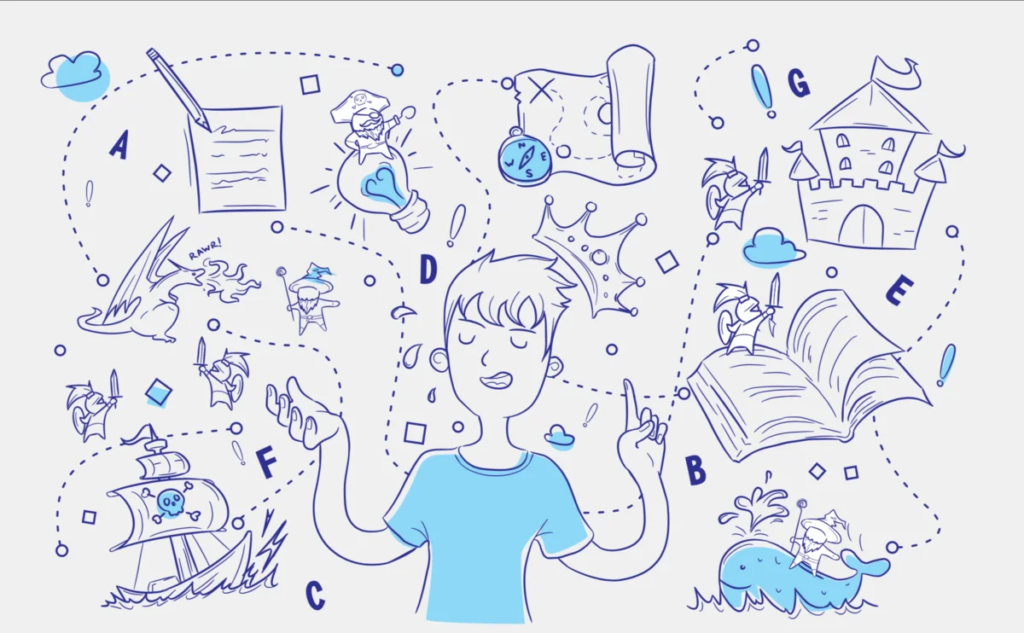Introduction: In the world of graphic design, creating visually appealing designs is not enough. To truly engage and captivate an audience, designers must harness the power of visual storytelling. Visual storytelling goes beyond aesthetics, utilizing images, illustrations, and other design elements to convey narratives, evoke emotions, and leave a lasting impact. Let’s explore why visual storytelling is crucial in graphic design.
1. Grabbing Attention and Making an Impression: In today’s fast-paced world, capturing the attention of viewers is a challenging task. Visual storytelling allows designers to create compelling narratives that grab attention and leave a memorable impression. By crafting designs that tell stories, designers can evoke curiosity, ignite emotions, and make a lasting impact on the audience.
2. Conveying Complex Ideas and Messages: Some ideas and messages are difficult to convey through words alone. Visual storytelling provides an effective means to simplify complex concepts and communicate them in a more accessible and engaging way. By using visuals, designers can break down complex information, present it in a visually digestible manner, and ensure better comprehension and retention among viewers.
3. Creating Emotional Connections: Humans are inherently drawn to stories and emotions. Visual storytelling enables designers to tap into this innate connection by evoking emotions through visuals. By carefully selecting colors, imagery, and design elements, designers can create designs that resonate with viewers on an emotional level. This emotional connection helps build brand loyalty, increases engagement, and fosters a deeper understanding of the intended message.
4. Enhancing Brand Identity and Differentiation: Visual storytelling plays a vital role in shaping and enhancing brand identity. By using consistent visual narratives across various design materials, designers can establish a unique and recognizable brand image. The use of consistent visual elements, such as color schemes, typography, and illustrations, helps differentiate a brand from its competitors and create a cohesive brand experience for the audience.
5. Engaging and Memorable User Experience: A well-crafted visual story can significantly enhance the user experience. By guiding users through a narrative, designers can create an engaging journey that keeps them immersed and connected. Memorable visual storytelling makes the user experience more enjoyable, encourages interaction, and increases the likelihood of users returning to engage with the brand or product again.
6. Influencing Decision-Making and Behavior: Visual storytelling has the power to influence decision-making and behavior. By creating narratives that align with the brand’s values and resonate with the target audience, designers can shape perceptions, evoke desired emotions, and ultimately drive action. Whether it’s encouraging a purchase, promoting social change, or inspiring advocacy, well-executed visual storytelling can be a persuasive tool.
7. Uniting Design Elements and Enhancing Communication: In graphic design, various elements like text, images, icons, and illustrations need to work harmoniously to convey a coherent message. Visual storytelling acts as a unifying force, bringing these elements together to create a cohesive and impactful design. It helps designers communicate messages effectively, ensuring that the visuals and accompanying content align seamlessly.
Conclusion: Visual storytelling is a powerful tool that elevates graphic design from mere aesthetics to a captivating and meaningful experience. It enables designers to grab attention, convey complex ideas, create emotional connections, enhance brand identity, and shape user behavior. By leveraging the art of visual storytelling, designers can engage, inspire, and leave a lasting impact on their audience, making their designs more than just visually pleasing, but also thought-provoking and memorable.


